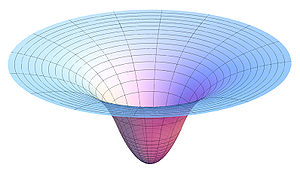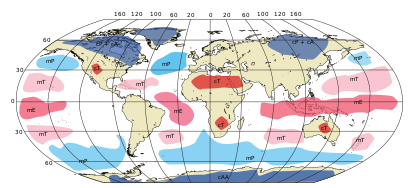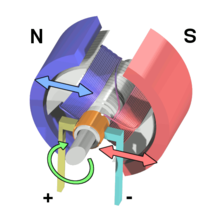https://www.quora.com/Can-a-human-have-babies-with-other-animals-If-not-then-why
https://geneticliteracyproject.org/2023/04/12/many-animals-can-walk-at-birth-why-are-human-babies-born-with-so-few-skills/
https://www.ncbi.nlm.nih.gov/pmc/articles/PMC3130380/
https://www.businessinsider.com/animal-expert-explains-humans-killing-pets-cuteness-technology-john-bradshaw-anthrozoologist-2017-9
https://www.rochester.edu/newscenter/did-human-like-intelligence-evolve-to-care-for-helpless-babies-162202/
https://www.freethink.com/futurology/artificial-wombs-ectogenesis
https://en.wikipedia.org/wiki/Egg
https://en.wikipedia.org/wiki/Anisotropy
https://en.wikipedia.org/wiki/Anisotropic_filtering
https://en.wikipedia.org/wiki/Anisotropic_conductive_film
https://en.wikipedia.org/wiki/Anisotropic_terahertz_microspectroscopy
https://en.wikipedia.org/wiki/Anisotropy_energy
https://en.wikipedia.org/wiki/Isotropic_quadratic_form
https://en.wikipedia.org/wiki/Anisogamy
Anisogamy most likely evolved from isogamy.[3] Since the biological definition of male and female is based on gamete size, the evolution of anisogamy is viewed as the evolutionary origin of male and female sexes.[4][5] Anisogamy is an outcome of both natural selection and sexual selection,[6] and led the sexes to different primary and secondary sex characteristics[7] including sex differences in behavior.[8]
https://en.wikipedia.org/wiki/Anisogamy
https://en.wikipedia.org/wiki/Isogamy
Anisogamy is a form of sexual reproduction that involves the union or fusion of two gametes that differ in size and/or form. The smaller gamete is male, a sperm cell, whereas the larger gamete is female, typically an egg cell. Anisogamy is predominant among multicellular organisms.[1] In both plants and animals gamete size difference is the fundamental difference between females and males.[2]
https://en.wikipedia.org/wiki/Anisogamy
https://en.wikipedia.org/wiki/Artificial_cell
https://en.wikipedia.org/wiki/Egg_cell
While the non-mammalian animal egg was obvious, the doctrine ex ovo omne vivum ("every living [animal comes from] an egg"), associated with William Harvey (1578–1657), was a rejection of spontaneous generation and preformationism as well as a bold assumption that mammals also reproduced via eggs. Karl Ernst von Baer discovered the mammalian ovum in 1827.[3][4] The fusion of spermatozoa with ova (of a starfish) was observed by Oskar Hertwig in 1876.[5][6]
https://en.wikipedia.org/wiki/Egg_cell
https://en.wikipedia.org/wiki/Fusor
https://en.wikipedia.org/wiki/Transmutation
https://en.wikipedia.org/wiki/Materialization
https://en.wikipedia.org/wiki/Transpiration
https://en.wikipedia.org/wiki/Guard_cell
https://en.wikipedia.org/wiki/Turgor_pressure
Turgor pressure is the force within the cell that pushes the plasma membrane against the cell wall.[1]
It is also called hydrostatic pressure, and is defined as the pressure in a fluid measured at a certain point within itself when at equilibrium.[2] Generally, turgor pressure is caused by the osmotic flow of water and occurs in plants, fungi, and bacteria. The phenomenon is also observed in protists that have cell walls.[3] This system is not seen in animal cells, as the absence of a cell wall would cause the cell to lyse when under too much pressure.[4] The pressure exerted by the osmotic flow of water is called turgidity. It is caused by the osmotic flow of water through a selectively permeable membrane. Movement of water through a semipermeable membrane from a volume with a low solute concentration to one with a higher solute concentration is called osmotic flow. In plants, this entails the water moving from the low concentration solute outside the cell into the cell's vacuole.[citation needed]
https://en.wikipedia.org/wiki/Turgor_pressure
https://en.wikipedia.org/wiki/Capillary_action
https://en.wikipedia.org/wiki/Adhesion
https://en.wikipedia.org/wiki/Interface_(matter)
https://en.wikipedia.org/wiki/Dispersive_adhesion
https://en.wikipedia.org/wiki/Surface_energy
https://en.wikipedia.org/wiki/Sublimation_(chemistry)
https://en.wikipedia.org/wiki/Deposition_(phase_transition)
https://en.wikipedia.org/wiki/Frost
https://en.wikipedia.org/wiki/Fractal
https://en.wikipedia.org/wiki/Fractal_dimension
https://en.wikipedia.org/wiki/Space-filling_curve
https://en.wikipedia.org/wiki/Freezing
https://en.wikipedia.org/wiki/Hysteresis#Liquid-solid_phase_transitions
https://en.wikipedia.org/wiki/Magnetic_moment
https://en.wikipedia.org/wiki/Quadrupole_moment
https://en.wikipedia.org/wiki/Multipole_expansion
https://en.wikipedia.org/wiki/Gravitational_field
https://en.wikipedia.org/wiki/Fictitious_force
https://en.wikipedia.org/wiki/Rotating_reference_frame
https://en.wikipedia.org/wiki/Centrifugal_force_(fictitious)
https://en.wikipedia.org/wiki/Gravitational_potential
In classical mechanics, the gravitational potential at a point in space is equal to the work (energy transferred) per unit mass that would be needed to move an object to that point from a fixed reference point. It is analogous to the electric potential with mass playing the role of charge. The reference point, where the potential is zero, is by convention infinitely far away from any mass, resulting in a negative potential at any finite distance.
https://en.wikipedia.org/wiki/Gravitational_potential
https://en.wikipedia.org/wiki/Test_particle
In physics, a gravitational field is a model used to explain the influences that a massive body extends into the space around itself, producing a force on another massive body.[1] Thus, a gravitational field is used to explain gravitational phenomena, and is measured in newtons per kilogram (N/kg). Equivalently, it is measured in meters per second squared (m/s2).
In its original concept, gravity was a force between point masses. Following Isaac Newton, Pierre-Simon Laplace attempted to model gravity as some kind of radiation field or fluid, and since the 19th century, explanations for gravity have usually been taught in terms of a field model, rather than a point attraction.
In a field model, rather than two particles attracting each other, the particles distort spacetime via their mass, and this distortion is what is perceived and measured as a "force".[citation needed] In such a model one states that matter moves in certain ways in response to the curvature of spacetime,[2] and that there is either no gravitational force,[3] or that gravity is a fictitious force.[4]
Gravity is distinguished from other forces by its obedience to the equivalence principle.
https://en.wikipedia.org/wiki/Gravitational_field
https://en.wikipedia.org/wiki/Gravitational_field
https://en.wikipedia.org/wiki/Euclidean_vector
https://en.wikipedia.org/wiki/Spherical_harmonics
https://en.wikipedia.org/wiki/Cosmic_microwave_background
CMB is landmark evidence of the Big Bang theory for the origin of the universe. In the Big Bang cosmological models, during the earliest periods, the universe was filled with an opaque fog of dense, hot plasma of sub-atomic particles. As the universe expanded, this plasma cooled to the point where protons and electrons combined to form neutral atoms of mostly hydrogen. Unlike the plasma, these atoms could not scatter thermal radiation by Thomson scattering, and so the universe became transparent.[4] Known as the recombination epoch, this decoupling event released photons to travel freely through space – sometimes referred to as relic radiation.[1] However, the photons have grown less energetic, since the expansion of space causes their wavelength to increase. The surface of last scattering refers to a shell at the right distance in space so photons are now received that were originally emitted at the time of decoupling.
https://en.wikipedia.org/wiki/Cosmic_microwave_background
https://en.wikipedia.org/wiki/Optical_telescope
https://en.wikipedia.org/wiki/Radio_telescope
https://en.wikipedia.org/wiki/Bell_Labs
https://en.wikipedia.org/wiki/Eigenfunction
https://en.wikipedia.org/wiki/Linear_map
https://en.wikipedia.org/wiki/Morphism
https://en.wikipedia.org/wiki/Matrix_(mathematics)
https://en.wikipedia.org/wiki/Noncommutative_ring
https://en.wikipedia.org/wiki/Square_matrix
https://en.wikipedia.org/wiki/Main_diagonal
https://en.wikipedia.org/wiki/Off-diagonal_element
https://en.wikipedia.org/wiki/Identity_function
https://en.wikipedia.org/wiki/Surjective_function
https://en.wikipedia.org/wiki/Axiom_of_choice
https://en.wikipedia.org/wiki/Constructible_universe
https://en.wikipedia.org/wiki/Image_(mathematics)
https://en.wikipedia.org/wiki/Binary_relation#Operations
https://en.wikipedia.org/wiki/Composition_of_relations
https://en.wikipedia.org/wiki/Syllogism
https://en.wikipedia.org/wiki/Parity
https://en.wikipedia.org/wiki/Symmetry
https://en.wikipedia.org/wiki/Mirror_(disambiguation)
https://en.wikipedia.org/wiki/Magnetic_mirror
https://en.wikipedia.org/wiki/Magnetic_field_line
https://en.wikipedia.org/wiki/Streamlines,_streaklines,_and_pathlines
https://en.wikipedia.org/wiki/Aurora
https://en.wikipedia.org/wiki/Interchange_instability
https://en.wikipedia.org/wiki/Acoustic_mirror
https://en.wikipedia.org/wiki/Parabolic_microphone
https://en.wikipedia.org/wiki/Parabolic_antenna
https://en.wikipedia.org/wiki/Parabolic_reflector
Circular paraboloid
https://en.wikipedia.org/wiki/Parabolic_reflector
Plot of a two-dimensional slice of the gravitational potential in and around a uniform spherical body. The inflection points of the cross-section are at the surface of the body.
https://en.wikipedia.org/wiki/Gravitational_potential
https://en.wikipedia.org/wiki/Scalar_potential
https://en.wikipedia.org/wiki/Gradient
https://en.wikipedia.org/wiki/Geodetic_Reference_System_1980
https://en.wikipedia.org/wiki/Infinity
https://en.wikipedia.org/wiki/Infinite_series
https://en.wikipedia.org/wiki/Ring_(mathematics)
https://en.wikipedia.org/wiki/Binary_operation
https://en.wikipedia.org/wiki/Matrix_multiplication
https://en.wikipedia.org/wiki/Block_matrix
https://en.wikipedia.org/wiki/Shear_wave_splitting
https://en.wikipedia.org/wiki/Birefringence
https://en.wikipedia.org/wiki/Mechanical_stress
https://en.wikipedia.org/wiki/Particle
https://en.wikipedia.org/wiki/Particle_aggregation
https://en.wikipedia.org/wiki/Rheology
[https://en.wikipedia.org/wiki/Deformation_(physics)]
https://en.wikipedia.org/wiki/Granular_material
https://en.wikipedia.org/wiki/Sand
https://en.wikipedia.org/wiki/Coal
https://en.wikipedia.org/wiki/Continuum_mechanics
https://en.wikipedia.org/wiki/Crystallographic_defect
https://en.wikipedia.org/wiki/Vacancy_defect
https://en.wikipedia.org/wiki/Melting_point
https://en.wikipedia.org/wiki/Supercooling
In plants, cellular barriers such as lignin, suberin, and the cuticle inhibit ice nucleators and force water into the supercooled tissue.
https://en.wikipedia.org/wiki/Supercooling
https://en.wikipedia.org/wiki/Nucleation
https://en.wikipedia.org/wiki/Atmospheric_pressure
https://en.wikipedia.org/wiki/Weight
https://en.wikipedia.org/wiki/Pressure#Fluid_pressure
https://en.wikipedia.org/wiki/Inviscid
https://en.wikipedia.org/wiki/Superfluidity
https://en.wikipedia.org/wiki/High-energy_physics
https://en.wikipedia.org/wiki/Particle_accelerator
https://en.wikipedia.org/wiki/Antimatter
https://en.wikipedia.org/wiki/Gamma_ray
https://en.wikipedia.org/wiki/Ionizing_radiation
https://en.wikipedia.org/wiki/Acute_radiation_syndrome
https://en.wikipedia.org/wiki/Nuclear_reactors
A natural nuclear fission reactor is a uranium deposit where self-sustaining nuclear chain reactions occur. The conditions under which a natural nuclear reactor could exist had been predicted in 1956 by Paul Kuroda.[1] The remnants of an extinct or fossil nuclear fission reactor, where self-sustaining nuclear reactions have occurred in the past, can be verified by analysis of isotope ratios of uranium and of the fission products (and the stable daughter nuclides of those fission products). An example of this phenomenon was discovered in 1972 in Oklo, Gabon by Francis Perrin under conditions very similar to Kuroda's predictions.
Oklo is the only location where this phenomenon is known to have occurred, and consists of 16 sites with patches of centimeter-sized ore layers. Here self-sustaining nuclear fission reactions are thought to have taken place approximately 1.7 billion years ago, during the Statherian period of the Paleoproterozoic, and continued for a few hundred thousand years, probably averaging less than 100 kW of thermal power during that time.[2][3][4]
https://en.wikipedia.org/wiki/Natural_nuclear_fission_reactor
https://en.wikipedia.org/wiki/Thermal_power_station
https://en.wikipedia.org/wiki/Gas_turbine
https://en.wikipedia.org/wiki/Internal_combustion_engine
https://en.wikipedia.org/wiki/Wankel_engine
https://en.wikipedia.org/wiki/Reuleaux_triangle
https://en.wikipedia.org/wiki/Octant_projection
https://en.wikipedia.org/wiki/Diesel_engine
https://en.wikipedia.org/w/index.php?title=Compression-ignition_engine&redirect=no
https://en.wikipedia.org/wiki/Otto_cycle
https://en.wikipedia.org/wiki/Jet_engine
https://en.wikipedia.org/wiki/Axial_compressor
https://en.wikipedia.org/wiki/Blast_furnace
https://en.wikipedia.org/wiki/Smelting
https://en.wikipedia.org/wiki/Sinter_plant
https://en.wikipedia.org/wiki/Port_Kembla,_New_South_Wales#Industrial_change
Sinter plants agglomerate iron ore fines (dust) with other fine materials at high temperature, to create a product that can be used in a blast furnace. The final product, a sinter, is a small, irregular nodule of iron mixed with small amounts of other minerals. The process, called sintering, causes the constituent materials to fuse to make a single porous mass with little change in the chemical properties of the ingredients. The purpose of sinter are to be used converting iron into steel.
Sinter plants, in combination with blast furnaces, are also used in non-ferrous smelting. About 70% of the world's primary lead production is still produced using the sinter plant–blast furnace combination,[1] and this combination was formerly often used in copper smelting (at the Electrolytic Refining and Smelting smelter in Wollongong, New South Wales, for example[2]).
https://en.wikipedia.org/wiki/Sinter_plant
https://en.wikipedia.org/wiki/Catalytic
https://en.wikipedia.org/wiki/Water_dimer
The efficiency is further modified by how smoothly the air and the combustion gases flow through the engine, how well the flow is aligned (known as incidence angle) with the moving and stationary passages in the compressors and turbines.[36] Non-optimum angles, as well as non-optimum passage and blade shapes can cause thickening and separation of Boundary layers and formation of Shock waves. It is important to slow the flow (lower speed means less pressure losses or Pressure drop) when it travels through ducts connecting the different parts. How well the individual components contribute to turning fuel into thrust is quantified by measures like efficiencies for the compressors, turbines and combustor and pressure losses for the ducts. These are shown as lines on a Thermodynamic cycle diagram.
https://en.wikipedia.org/wiki/Jet_engine
The efficiency of the engine is controlled primarily by the operating conditions inside the engine which are the pressure produced by the compressor and the temperature of the combustion gases at the first set of rotating turbine blades. The pressure is the highest air pressure in the engine. The turbine rotor temperature is not the highest in the engine but is the highest at which energy transfer takes place ( higher temperatures occur in the combustor). The above pressure and temperature are shown on a Thermodynamic cycle diagram.
https://en.wikipedia.org/wiki/Jet_engine
https://en.wikipedia.org/wiki/Carnot_efficiency
https://en.wikipedia.org/wiki/Thermal_reservoir
https://en.wikipedia.org/wiki/Atmospheric_science
https://en.wikipedia.org/wiki/Air_mass
https://en.wikipedia.org/wiki/K%C3%B6ppen_climate_classification#Group_D:_Continental/microthermal_climates
Classification and notation
The Bergeron classification is the most widely accepted form of air mass classification, though others have produced more refined versions of this scheme over different regions of the globe.[1][2] Air mass classification involves three letters. The first letter describes its moisture properties – "c" represents continental air masses (dry), and "m" represents maritime air masses (moist). Its source region follows: "T" stands for Tropical, "P" stands for Polar, "A" stands for Arctic or Antarctic, "M" stands for monsoon, "E" stands for Equatorial, and "S" stands for adiabatically drying and warming air formed by significant downward motion in the atmosphere. For instance, an air mass originating over the desert southwest of the United States in summer may be designated "cT". An air mass originating over northern Siberia in winter may be indicated as "cA".[3]
https://en.wikipedia.org/wiki/Air_mass
https://en.wikipedia.org/wiki/Heat
https://en.wikipedia.org/wiki/Inexact_differential
https://en.wikipedia.org/wiki/Stator
https://en.wikipedia.org/wiki/Printed_circuit_board
https://en.wikipedia.org/wiki/Hairpin_technology
https://en.wikipedia.org/wiki/Synchronous_motor
https://en.wikipedia.org/wiki/AC_motor
https://en.wikipedia.org/wiki/Induction_motor
https://en.wikipedia.org/wiki/Permanent_magnet_motor
Schematic of a permanent magnet motor
https://en.wikipedia.org/wiki/Permanent_magnet_motor
https://en.wikipedia.org/wiki/Induction_motor
https://en.wikipedia.org/wiki/Induction_motor#Steinmetz_equivalent_circuit
https://en.wikipedia.org/wiki/Electrical_reactance
https://en.wikipedia.org/wiki/Square_wave
https://en.wikipedia.org/wiki/Stochastic
https://en.wikipedia.org/wiki/Image_processing
https://en.wikipedia.org/wiki/Wirephoto
https://en.wikipedia.org/wiki/Two-state_trajectory
https://en.wikipedia.org/wiki/Square_root_of_minus_one
https://en.wikipedia.org/wiki/Automorphism
https://en.wikipedia.org/wiki/Automorphism_group
https://en.wikipedia.org/wiki/Linear_transformations
https://en.wikipedia.org/wiki/Module_homomorphism
https://en.wikipedia.org/wiki/Rotations_and_reflections_in_two_dimensions
https://en.wikipedia.org/wiki/Trigonometric_identities
https://en.wikipedia.org/wiki/Anisogramma_anomala
DRAFT




No comments:
Post a Comment